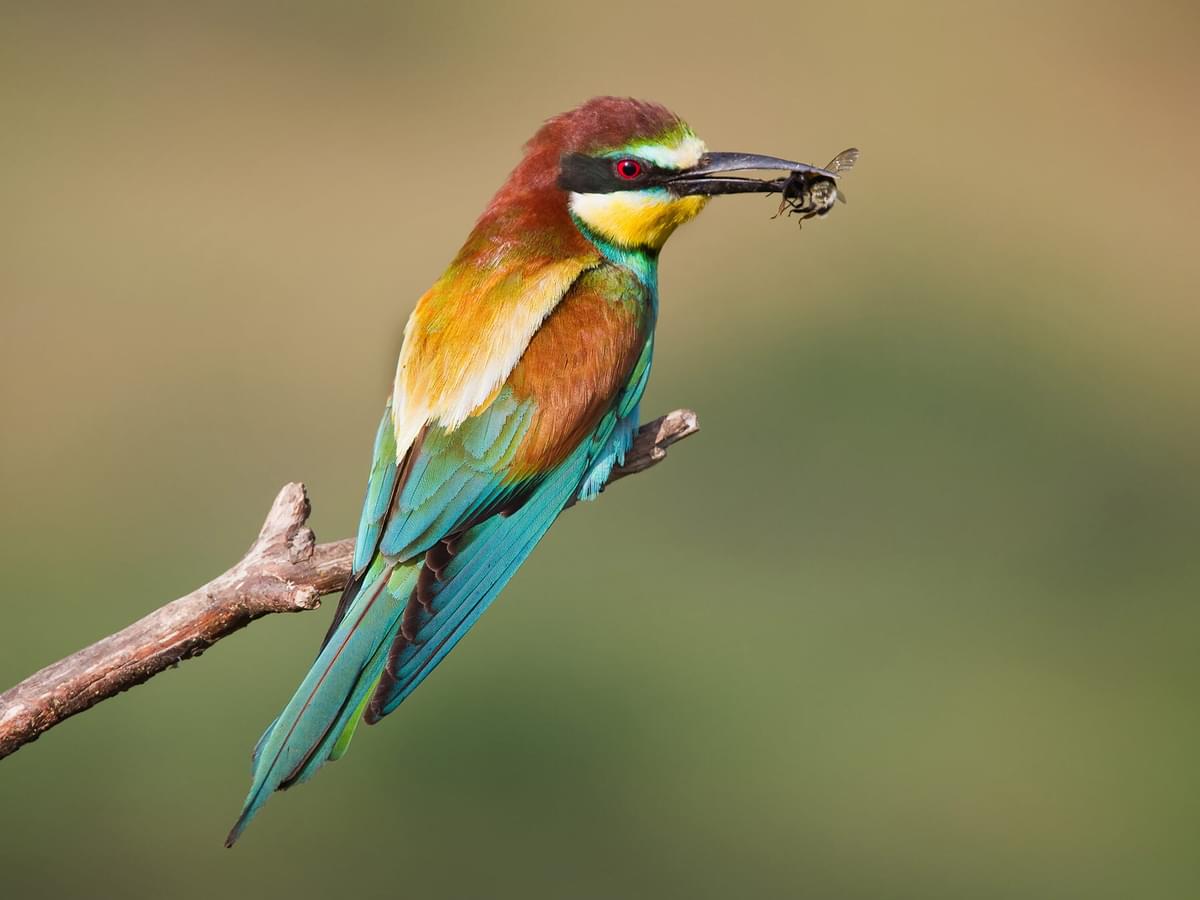Jump to Section
Do Birds Eat Bees?
Last updated: 18 December 2023

Key takeaways
- Birds as Bee Predators: Certain bird species, like bee-eaters, summer and scarlet tanagers, specialize in eating bees, while others, such as honey buzzards and purple martins, consume bees more opportunistically, either as larvae or adult insects.
- Catching Techniques: Birds that feed on bees exhibit specialized hunting skills, catching them mid-flight or from branches. Bee-eaters, for instance, use their long, curved beaks to incapacitate bees by removing their stingers and toxins before consumption.
- Specialized Bee-Eaters: The Meropidae family, consisting of 22 bee-eater species, are proficient bee hunters. Known for their vibrant plumage and vocal nature, they typically nest in burrowed holes and use their beaks effectively to catch bees.
- Minimal Threat to Bee Populations: While birds like bee-eaters and honey buzzards do prey on bees, they don't pose a significant threat to bee populations compared to other predators like bears, foxes, and badgers, who may destroy hives and consume honey.
There's more to discover. Continue scrolling for the full article below.
Given that bees have stingers, it may come as a surprise that any bird would favour eating these as part of their diets. So let's get to it, what kind of birds eat bees?
There are many different types of birds that do eat bees - some of which are bee-eating specialists and others that are opportunists.
For example, species such as bee-eaters, summer tanagers and scarlet tanagers will consume them as a large part of their diet. In contrast, other species, such as the honey buzzard or purple martin will only eat them occasionally as either larvae or adult insects.
There are a few more types of birds that will eat bees, which we'll go into more detail about below.

Scarlet Tanager consuming a bee
How do birds catch bees?
Another reason why not many birds consume bees as part of their diet is the skill required to catch them in the first place.
Bees rarely fly in a straight line, and they can be speedy. So, not only do birds need to be agile enough, but they also need the ability to judge the required angle and speed to enable them to catch bees.
Most bee-eaters will use the same method when it comes to catching bees. They'll either glide and catch the bee during flight or swoop down and grab them from a branch.
Once caught, they use their long, curved beaks to bash the bee's head on a surface, and then they remove the stinger and toxins before consuming the bee.

European Bee-eater with a bee
Ultimate bee consumers: Bee-eaters
There are 22 different species of bee-eater who make up the Meropidae family - they are the ultimate consumers of bees. A large proportion of these birds reside in Africa, but perhaps the most well known is the European Bee-eater.
The majority of bee-eaters are gregarious, have bright plumage and can be extremely vocal. They nest by digging holes in the earth to provide a safe and secure spot for their eggs. As previously mentioned, they use their long, curved beaks to catch, kill and consume bees.

Red-bearded Bee-eater
The Honey Buzzard
If you happen to live in the UK, you may have witnessed (or be aware of) the Honey Buzzard. These large raptors spend the summer in the UK then migrate to Africa for the winter. They are greyish-brown in colour, with a long tail and wingspan.
Honey Buzzards will follow adult bees back to their hives and then use their powerful claws to open up the nest. Once they've done this, they will consume the larvae of bees and wasps - they prefer to consume larvae instead of adult bees and wasps.
So you're probably thinking, well how do they manage this without getting stung by all the angry bees? Well, the honey buzzard has specialised feathers on their face and neck which act as a form of armour against the stings of bees and wasps.

A Honey Buzzard consuming bees
Other birds that sometimes eat bees
Birds are mostly omnivores, which means they consume plants, animals and insects as part of their diets.
In addition to the birds listed above, many other species will occasionally eat bees, such as northern cardinals, orioles, swifts, thrushes, woodpeckers and mockingbirds. Woodpeckers can single out a beehive and will then eat the bees whenever the opportunity arises.
However, these birds much prefer to eat slower-moving insects such as worms, caterpillars and spiders as it takes less skill than trying to catch the fast-moving bee.

A black-headed oriole waiting patiently to catch a bee
Are bees threatened by birds?
Predatory birds are not a direct threat to the bee population, as both birds and bees have co-existed for many years.
When you compare the impact of birds on the population to other predators such as bears, foxes, shrews, badgers and rodents, their impact is minimal. These other predators will not only consume the bees, but they will often destroy the hive and devour the honey.


